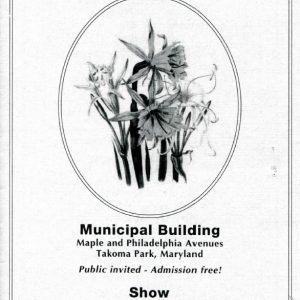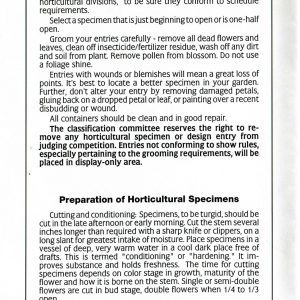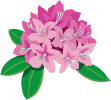Takoma Horticultural Club
A hardy perennial since 1916
II. Bulb Sales
This is the second installment of the series. Here we tell the history of THC’s bulb sales, as recorded in several documents.


The Club’s first constitution spelled out “serving as a medium for co-operative buying of seeds, plants, and sundries” as one of its principal activities. Within months of its founding in 1916, bulbs became the first cooperative buying venture (“in a rather interesting manner,” according to the mid-century club historian, archivist and officer, Arthur Hecht). During the summer of 1916, the Department of Agriculture sought bids for the importation of bulbs, an order was placed with the firm submitting the lowest bid, and the bulbs were delivered. A few days later, a shipment of similar bulbs was received from the Dutch company, M. Van Waveren & Sons, which had mistaken the request for a bid for an order. The Department of Agriculture refused the shipment.
A charter member of THC, who was also the Department of Agriculture official in charge of bulb growing, brought this “opportunity to obtain the unusually fine bulbs at wholesale rates” to the Club’s officers. Without a vote by the general membership and with a treasury of $15.31, the Club bought the shipment “on faith” to resell to members. This act proved successful. Members bought all the bulbs. M. Van Waveren & Sons wrote “If the Takoma Park Horticultural Improvement Club is an organization which, in six days, can absorb $600 (approximately $13,000 in today’s dollars) worth of bulbs, it is an organization with which we would like to do future business,” and offered to continue to supply the Club with bulbs at wholesale rates. THC continued to import bulbs from the same company for at least the next 50 years.
The Club has held bulb sales almost every one of its 100 years, with the exception of the World War II period and a year or two in the 21st century. Bulb orders reached a peak in 1925 — 333 pre-orders for 125,000 bulbs amounting to $3,328 (approximately $45,000 in today’s dollars) — as compared to the Club’s current purchases for resale of about $2,000). At some as-yet-to-be-learned point in the Club’s second half-century, bulb sales also became an important fundraising activity to supplement membership dues. (As a cooperative buying activity it was considered a “service to members” and not a source of income.) Additionally, the Club stopped importing bulbs directly; it currently obtains them through a third party. Although this relieves today’s members of the need to sort individual orders, a mid-century THC Newsletter suggests that some members were disappointed that they were not called to be part of the repackaging effort in a member’s garage.
Many of the narcissuses, jonquils, and other bulbs seen growing in the gardens of older (and sometimes newer) homes in Takoma, DC and Takoma Park today are likely to be the babies of bulbs from THC. Home-grown bulbs were featured in the club’s flower shows, which continued into the 1990s. Takoma was the site of the Department of Agriculture’s trial gardens for the introduction of foreign bulbs. The search through the archives has found only one complaint about the quality of the bulbs: the 1929 order. Photos taken in the spring of 1930 at the homes of members E.A. Hollowell on 5th Street, NW and L.W. Kephart on Maple Avenue document this grievance. —Nancy Newton
